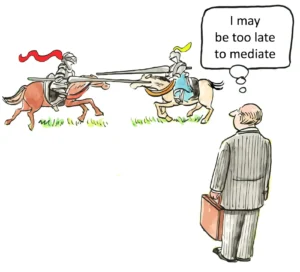Constitutional Limits on Presidential Power to Reorganize Federal Agencies
In the American constitutional system, the President’s authority to reorganize federal agencies is subject to significant constraints. These constitutional limits are designed to maintain the separation of powers and prevent executive overreach. While presidents have historically sought to streamline government operations through reorganization efforts, their power to do so is not unlimited. The constitutional framework establishes boundaries that protect legislative prerogatives and ensure that executive actions remain within lawful parameters.
Historical Context of Presidential Reorganization Authority
Presidential reorganization authority refers to a statutory power that Congress has periodically granted to presidents, allowing them to divide, consolidate, abolish, or create federal agencies through presidential directive. This authority was first granted in 1932 and has been extended to nine presidents on 16 separate occasions, most recently to Ronald Reagan. Since 1984, however, no president has possessed this formal reorganization authority.
The purpose behind granting such authority was to enable presidents to implement significant modifications to government architecture that might otherwise be too substantial to implement through normal parliamentary processes. These reorganization efforts were designed to enhance governmental efficiency, eliminate redundancies, and improve service delivery to the American public.
Unlike the normal process of lawmaking, reorganization plans issued under this authority historically became law if Congress took no action to nullify them during a fixed window of time following promulgation. This mechanism, colloquially called the “legislative veto,” differed from the standard legislative process where laws take effect with congressional action rather than in its absence.
The Supreme Court’s 1983 ruling found such one-house veto provisions unconstitutional, effectively ending the previous framework for presidential reorganization authority. This decision reflected the Court’s concern with maintaining proper separation of powers and ensuring that legislative functions remained with Congress.
Constitutional Framework for Executive Power
The U.S. Constitution establishes clear boundaries on presidential authority. Article II contains the vesting clause, which states: “The executive Power shall be vested in a President of the United States of America.” While this clause establishes the President as head of the Executive Branch, presidential powers are subject to fundamental limitations.
The Take Care Clause in Article II, Section 3 requires the President to “take Care that the Laws be faithfully executed.” This clause both grants and constrains presidential power. It invests the President with broad enforcement authority while simultaneously underscoring that the executive is under a duty to faithfully execute the laws of Congress and not disregard them.
At a minimum, the Take Care Clause means that the President may neither breach federal law nor order subordinates to do so, for defiance cannot be considered faithful execution. The Constitution incorporates the English bars on dispensing or suspending the law, with some scholars arguing that the Clause itself prohibits both practices. Hence, the Constitution never grants the President authority to either authorize private violations of the law (issue individualized dispensations) or nullify laws (suspend their operation).
The President’s authority to reorganize the executive branch is constrained by three fundamental limitations:
- The President may not, without congressional authorization, use executive powers to change domestic law or create or alter existing legal obligations
- Executive powers are subject to regulation by Congress
- In the event of a conflict between the exercise of executive powers and congressional legislation, the latter prevails
These limitations reflect the historical constraints on prerogative power and the constitutional framework that makes express presidential powers subject to legislative constraint.
Recent Legislative Developments
In February 2025, Senator Mike Lee and House Oversight and Government Reform Chairman James Comer introduced the Reorganizing Government Act of 2025. This legislation seeks to renew and extend the President’s authority to propose executive branch reorganization plans until December 2026, restoring an authority that was last in effect in 1984.
Under this bill:
- Congress must vote on proposed reorganization plans within 90 days using an expedited process that cannot be filibustered
- The President’s authority would expand to include entire executive departments, not just agencies
- The bill prohibits reorganization plans that increase federal workforce size or expenditures
The legislation has been endorsed by Heritage Action, Pacific Legal Foundation, and Job Creators Network, reflecting support from conservative policy organizations concerned with government efficiency and reducing bureaucratic overreach.
Senator Lee stated that “This legislation allows the President to use his constitutional authority as Chief Executive to reorganize federal agencies, eliminate weaponization, and right-size the government to better serve the American people.” Chairman Comer added that “The federal bureaucracy has grown dramatically in size and scope, creating unnecessary red tape. We must cut through the inefficiency and streamline government to improve service delivery and save taxpayers money.”
Current Administrative Actions
In February 2025, the Office of Management and Budget and the Office of Personnel Management issued a memo to the leaders of all executive branch agencies directing them to submit “reorganization plans” by March 13 and to prepare for potential workforce reductions.
The memo instructed agencies to “consolidate areas of the agency organization chart that are duplicative; consolidate management layers where unnecessary layers exist; seek reductions in components and positions that are non-critical; implement technological solutions that automate routine tasks while enabling staff to focus on higher-value activities; close and/or consolidate regional field offices to the extent consistent with efficient service delivery; and maximally reduce the use of outside consultants and contractors.”
These directives reflect the administration’s commitment to streamlining government operations and reducing federal expenditures. However, they also raise important questions about the constitutional limits of executive authority to implement such changes without explicit congressional authorization.
Judicial Precedents on Executive Power
The Supreme Court has established important precedents regarding the limits of presidential power to reorganize the federal government. In the landmark case of Youngstown Sheet & Tube v. Sawyer (1952), Justice Robert Jackson articulated a three-tiered framework for analyzing presidential power that continues to guide constitutional interpretation today.
According to Jackson’s framework:
- When the President acts pursuant to an express or implied authorization from Congress, “his authority is at its maximum”
- When the President acts in the absence of either a congressional grant or denial of authority, “there is a zone of twilight in which he and Congress may have concurrent authority”
- When the President takes measures incompatible with the express or implied will of Congress, “his power is at its lowest”
This framework suggests that presidential reorganization efforts are on strongest constitutional footing when explicitly authorized by Congress. Without such authorization, presidential actions to restructure federal agencies may face significant legal challenges.
The Supreme Court’s ruling in INS v. Chadha (1983) further constrained presidential reorganization authority by invalidating the legislative veto provision that had been central to previous reorganization statutes. This decision effectively ended the practice whereby reorganization plans would take effect unless explicitly rejected by Congress.
Separation of Powers Concerns
The principle of separation of powers is fundamental to the American constitutional system. This principle divides governmental authority among three branches—executive, legislative, and judicial—to prevent the concentration of power and protect against tyranny.
In the context of federal agency reorganization, separation of powers concerns arise when the President attempts to restructure agencies without proper congressional authorization. The Constitution vests the legislative power in Congress, including the authority to create, modify, or eliminate federal agencies. When presidents attempt to reorganize agencies unilaterally, they risk encroaching on this legislative function.
Constitutional limits must be placed on elected governments to prevent them from aggregating power, violating people’s rights, and denying their ability to continue choosing their representatives freely. The basic means to ensure democratic government is through separation of powers among branches and territorial divisions and the placement of checks and balances on their authority to prevent a concentration of power in one branch.
The essential principle of constitutional limits does not mean small or limited government. The size and scope of government is a matter of policy for the people to decide within a constitutional framework. Most modern democracies have adopted policies that generally enlarge the scope of government, with policy debates focusing on the extent of enlargement. What is essential to the principle are limits on the concentration of power in one person, group, or branch of government.
Historical Use of Reorganization Authority
Throughout American history, presidents have utilized reorganization authority to reshape the federal bureaucracy. Between 1932 and 1984, more than 100 reorganization plans were submitted by presidents. These plans ranged from minor changes within individual agencies to the creation of large new organizations, such as the Environmental Protection Agency (EPA) and the Federal Emergency Management Agency (FEMA).
The existing framework for reorganization authority required the President to submit plans to Congress for approval via a joint resolution using highly privileged and expedited procedure. This process allowed for significant executive initiative while preserving ultimate congressional control over agency structure.
The historical use of reorganization authority demonstrates both its utility in promoting governmental efficiency and the importance of maintaining appropriate checks on executive power. By requiring congressional approval of reorganization plans, the traditional framework balanced the President’s interest in administrative efficiency with Congress’s constitutional role in structuring the federal government.
Arguments for Expanded Presidential Authority
Proponents of expanded presidential reorganization authority argue that such power is necessary to address the growth and inefficiency of the federal bureaucracy. They contend that the federal government has expanded significantly over the past two centuries, leading to redundancies, bureaucratic obstacles, and wasteful spending.
With a federal budget that has grown from $3.6 billion to $7.3 trillion and over 400 executive agencies, streamlining government operations is seen as essential for cost savings and improved service delivery. Presidential reorganization authority is viewed as a tool to achieve these goals by allowing for comprehensive reforms that might be difficult to implement through the normal legislative process.
Supporters also argue that the President, as chief executive, is uniquely positioned to identify inefficiencies in the executive branch and implement necessary reforms. They contend that the constitutional vesting of executive power in the President implies some authority to organize the departments and agencies that carry out executive functions.
Additionally, proponents suggest that requiring congressional approval for every organizational change in the executive branch can lead to gridlock and prevent necessary reforms. They argue that a streamlined process for presidential reorganization, subject to congressional oversight, strikes an appropriate balance between efficiency and constitutional principles.
Arguments for Congressional Primacy
Critics of expanded presidential reorganization authority emphasize the constitutional role of Congress in structuring the federal government. They argue that the Constitution vests the legislative power in Congress, including the authority to create, modify, or eliminate federal agencies.
These critics contend that allowing the President to reorganize agencies without explicit congressional approval undermines the separation of powers and concentrates too much authority in the executive branch. They point to the Take Care Clause as evidence that the President’s role is to execute the laws as written by Congress, not to rewrite them through administrative reorganization.
Opponents also express concern that presidential reorganization authority could be used to undermine congressional intent by restructuring agencies in ways that alter their substantive missions. They argue that the structure of an agency often reflects policy choices made by Congress, and allowing the President to change that structure could effectively change the policy without legislative approval.
Furthermore, critics note that Congress is designed to be representative of diverse constituencies and interests, making it better suited than the President to make decisions about government organization that affect various stakeholders. They argue that the deliberative process of legislation, while sometimes cumbersome, ensures that reorganization decisions receive thorough consideration and reflect a broad consensus.
Constitutional Safeguards in Reorganization Legislation
To address constitutional concerns, modern proposals for presidential reorganization authority typically include various safeguards to preserve congressional oversight and prevent executive overreach. These safeguards are designed to ensure that reorganization authority remains consistent with constitutional principles of separation of powers.
The Reorganizing Government Act of 2025 includes several such safeguards:
- It requires affirmative congressional approval of reorganization plans through a joint resolution, rather than allowing plans to take effect unless rejected
- It establishes a 90-day timeline for congressional consideration, ensuring prompt action while allowing for thorough review
- It prohibits reorganization plans that would increase the size of the federal workforce or federal expenditures, limiting the potential scope of executive action
- It preserves Congress’s ability to amend or modify reorganization plans, rather than forcing an all-or-nothing vote
These safeguards reflect an attempt to balance the President’s interest in administrative efficiency with Congress’s constitutional role in structuring the federal government. By requiring affirmative congressional approval, the legislation avoids the constitutional problems associated with the legislative veto that was invalidated in INS v. Chadha.
Executive Orders and Their Limitations
Executive orders represent another tool through which presidents attempt to influence the organization and operation of federal agencies. However, these orders are subject to significant constitutional limitations.
Executive orders are legitimate in three primary circumstances:
- When issued pursuant to a grant of authority from Congress
- When related to the President’s role as commander-in-chief or other core constitutional powers, especially in areas of foreign policy and national security
- When dealing with the internal workings of executive agencies
Beyond these categories, executive orders affecting the rights and obligations of private parties may well be unconstitutional. They are not intended as a way for the executive branch to bypass Congress.
The President can issue executive orders to direct the operations of executive agencies within existing statutory frameworks. However, these orders cannot contravene statutory requirements or restructure agencies in ways that fundamentally alter their congressionally mandated missions.
Executive orders also cannot be used to create new agencies without congressional authorization or to eliminate agencies established by statute. Such actions would exceed the President’s constitutional authority and encroach on the legislative function reserved to Congress.
The Role of Congress in Agency Creation and Oversight
The Constitution vests the legislative power in Congress, including the authority to create federal agencies and define their powers and responsibilities. This authority stems from Article I, which grants Congress the power to make “all Laws which shall be necessary and proper for carrying into Execution” its enumerated powers.
Congress exercises this authority by enacting statutes that establish agencies, define their missions, set their budgets, and specify their organizational structures. Through these statutes, Congress makes policy choices about how government functions should be organized and carried out.
Congressional oversight of federal agencies is a crucial aspect of the separation of powers. Through hearings, investigations, and budget control, Congress monitors agency activities and ensures compliance with legislative intent. This oversight function serves as an important check on executive power and helps maintain the constitutional balance.
When considering presidential reorganization authority, Congress must balance the benefits of administrative efficiency against its own constitutional role in structuring the federal government. By requiring congressional approval of reorganization plans, legislation like the Reorganizing Government Act of 2025 preserves this essential legislative function while allowing for executive initiative.
Practical Implications for Agency Operations
Presidential reorganization efforts have significant practical implications for the operation of federal agencies and the delivery of government services. These implications extend beyond constitutional questions to affect how agencies function on a day-to-day basis.
Reorganization can lead to changes in agency leadership, shifts in programmatic priorities, and reallocations of resources. These changes can affect the implementation of statutory mandates and the delivery of services to the public.
Agency employees may face reassignments, changes in reporting relationships, or even potential job loss as a result of reorganization efforts. These workforce impacts can affect morale, institutional knowledge, and operational continuity within agencies.
Stakeholders who interact with federal agencies, including regulated entities, grant recipients, and service beneficiaries, may experience changes in their relationships with government as a result of reorganization. These changes can create uncertainty and require adaptation to new procedures and points of contact.
Given these practical implications, it is essential that reorganization efforts be undertaken with careful consideration of their effects on agency operations and public service delivery. Constitutional limits on presidential reorganization authority help ensure that such significant changes receive appropriate deliberation and reflect a broad consensus about governmental structure.
The Future of Presidential Reorganization Authority
The debate over presidential reorganization authority reflects broader tensions in American constitutional governance between efficiency and democratic accountability, between executive initiative and legislative control. As the federal government continues to evolve, these tensions are likely to persist.
Future developments in this area may depend on several factors:
- The success or failure of current reorganization efforts in achieving their stated goals of increased efficiency and reduced costs
- Judicial decisions that further clarify the constitutional boundaries of executive power in this domain
- Political dynamics that influence congressional willingness to delegate reorganization authority to the President
- Public perceptions of government effectiveness and the need for structural reform
Regardless of these developments, the constitutional principles of separation of powers and checks and balances will continue to shape the legal framework for presidential reorganization authority. These principles ensure that significant changes to governmental structure receive appropriate deliberation and reflect the will of the people as expressed through their elected representatives.
As the nation confronts complex challenges requiring effective governmental response, finding the appropriate balance between executive efficiency and constitutional constraints will remain an important aspect of American public administration.
Conclusion
The constitutional limits on presidential power to reorganize federal agencies reflect fundamental principles of American governance. While presidents have legitimate interests in promoting administrative efficiency and effectiveness, these interests must be balanced against the constitutional role of Congress in structuring the federal government.
The historical development of presidential reorganization authority demonstrates both its utility in promoting governmental reform and the importance of maintaining appropriate checks on executive power. By requiring congressional approval of reorganization plans, traditional frameworks have balanced executive initiative with legislative oversight.
Current proposals to renew presidential reorganization authority include safeguards designed to preserve this constitutional balance. These safeguards reflect an understanding that significant changes to governmental structure should receive thorough deliberation and broad support.
As the nation continues to debate the proper scope of presidential reorganization authority, it is essential to remember that the Constitution establishes a system of shared powers, not separate spheres of action. Within this system, the President and Congress must work together to ensure that the federal government is structured effectively to serve the American people while respecting constitutional boundaries.
The challenge for contemporary governance is to find mechanisms that allow for necessary administrative reforms while preserving the constitutional principles that have sustained American democracy for more than two centuries. By maintaining appropriate checks on executive power while allowing for presidential initiative, the nation can promote both governmental efficiency and constitutional fidelity in the organization of federal agencies.
Website Citations Used
- https://www.nteu.org/legislative-action/congressional-testimony/what-authority-the-president-should-have
- https://www.lee.senate.gov/services/files/4EA8323A-8509-4DA2-9806-D7153D1A9504
- https://www.meritalk.com/articles/hill-republicans-file-bill-to-pave-way-for-trump-reorg-plans/
- https://www.cbsnews.com/news/federal-personnel-budget-memo-reorganization-plans/
- https://constitution.congress.gov/browse/essay/artII-1/ALDE_00000243/
- https://www.democracyweb.org/study-guide/constitutional-limits/essential-principles
- https://www.heritage.org/political-process/report/the-presidents-reorganization-authority
- https://en.wikipedia.org/wiki/Presidential_reorganization_authority
- https://fedscoop.com/opm-agency-layoffs-reorganization-elon-musk-doge-trump/
- https://constitutioncenter.org/the-constitution/articles/article-ii/clauses/348
- https://www.everycrsreport.com/reports/R42852.html
- https://www.lee.senate.gov/2025/2/sen-lee-rep-comer-introduce-bill-fast-track-president-trump-s-government-reorganization-plans
- https://www.cato.org/blog/expansion-executive-power-overview
- https://library.cqpress.com/cqalmanac/document.php?id=cqal77-1201424
- https://en.wikipedia.org/wiki/Executive_order
- https://crsreports.congress.gov/product/pdf/R/R44909
- https://constitution.congress.gov/browse/essay/artII-S2-C2-3-6/ALDE_00000012/
- https://hls.harvard.edu/today/presidential-power-surges/
- https://obamawhitehouse.archives.gov/1600/executive-branch
- https://constitutioncenter.org/blog/defining-the-presidents-constitutional-powers-to-issue-executive-orders
- https://www.historians.org/perspectives-article/the-paradoxes-of-presidential-power-a-brief-history-of-executive-orders-february-2017/
- https://constitution.congress.gov/browse/essay/artII-S2-C2-3-9/ALDE_00013099/
- https://uscode.house.gov/view.xhtml?path=%2Fprelim%40title5%2Fpart1%2Fchapter9&edition=prelim
- https://www.usatoday.com/story/news/politics/2025/03/11/trump-federal-agencies-layoff-plans-march-13/82235201007/
- https://www.whitehouse.gov/presidential-actions/2025/02/implementing-the-presidents-department-of-government-efficiency-workforce-optimization-initiative/
- https://www.opm.gov/policy-data-oversight/latest-memos/guidance-on-agency-rif-and-reorganization-plans-requested-by-implementing-the-president-s-department-of-government-efficiency-workforce-optimization-initiative.pdf
- https://www.npr.org/2025/02/17/nx-s1-5297917/national-constitution-centers-jeffrey-rosen-discusses-the-extent-of-executive-power
- https://www.congress.gov/bill/119th-congress/senate-bill/583/all-info
- https://www.govexec.com/workforce/2025/03/inside-federal-agencies-rush-reshape-their-workforcesand-spare-employees-layoffs/403631/
- https://www.umaryland.edu/news/archived-news/february-2025/face-to-face-the-limits-of-presidential-power.php
- https://www.congress.gov/bill/119th-congress/house-bill/1295
- https://www.chcoc.gov/content/guidance-agency-rif-and-reorganization-plans-requested-implementing-president%E2%80%99s-%E2%80%9Cdepartment
- https://www.workplaceclassaction.com/2025/01/trump-fires-eeoc-commissioners-testing-constitutional-limits-on-presidential-power-over-independent-agencies/
- https://www.justsecurity.org/107267/can-president-dissolve-usaid-by-executive-order/
- https://constitutioncenter.org/the-constitution/interpretations/article-i-section-1-general-principles
- https://obamawhitehouse.archives.gov/the-press-office/2012/01/13/government-reorganization-fact-sheet
- https://constitution.congress.gov/browse/essay/artI-S1-2-1/ALDE_00000208/
- https://www.khanacademy.org/humanities/us-government-and-civics/us-gov-interactions-among-branches/us-gov-expansion-of-presidential-power/a/lesson-summary-expansion-of-presidential-power
- https://constitution.congress.gov/browse/article-1/section-8/
- https://www.brennancenter.org/issues/bolster-checks-balances/executive-power
- https://www.senate.gov/civics/constitution_item/constitution.htm
- https://www.aclu.org/news/civil-liberties/how-trumps-proposed-radical-expansion-of-executive-power-will-impact-our-freedoms
- http://democrats-appropriations.house.gov/news/fact-sheets/background-unlawful-impoundment-president-trumps-executive-orders
- https://harvardlawreview.org/print/vol-137/the-making-of-presidential-administration/
- https://sgp.fas.org/crs/misc/R42852.pdf
- https://www.thepolicycircle.org/briefs/the-executive-branch/
- https://www.whitehouse.gov/presidential-actions/2025/02/ensuring-accountability-for-all-agencies/
- https://abcnews.go.com/Politics/trump-testing-limits-presidential-power-experts-flex-stick/story?id=118018805
- https://theconversation.com/trumps-claims-of-vast-presidential-powers-run-up-against-article-2-of-the-constitution-and-exceed-previous-presidents-power-grabs-249662
- https://scholarship.law.wm.edu/cgi/viewcontent.cgi?article=1895&context=facpubs
Answer from Perplexity: pplx.ai/share


















